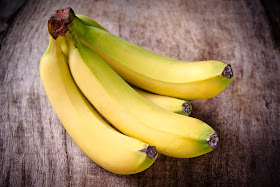 |
| So delicious... and not so healthy :( |
And you know what? I’m mostly ok with that. I have some
fundamental issues with cereal, such as the fact that it never seems to fill me
up for long and that it’s too often loaded up with enough sugar to get me
through a week. Luckily, there are some healthy cereal options out there that,
while not my ideal breakfast, are good enough to get the job done.
How do you choose a healthy cereal? It’s probably one of the
worst foods for being able to look
healthy while being just the opposite. My absolute favorite granola (Sweet Home
Farm French Vanilla) is one of those—it’s SO delicious, but has more added
sugar than I’m willing to eat most days. Finding a cereal or granola that’s healthy
means you must read the label, even if it doesn’t always tell you what you want
to hear.
What should a nutrition label say? Try to find a cereal that
fits within these requirements for each
half-cup serving:
- Fewer than 130 calories
- No added sugar OR sweeteners (fewer than 1 gram of sugar)
- If you really need a little sweet, look for a cereal with fewer than 6 grams of sugar per serving.
- 3 grams or more of fiber
- Maximum 125 mg of sodium
- No partially hydrogenated oils
- First ingredient: whole grain
For granola, try to find something that has 140 calories or
fewer per ¼ cup serving.
Sugar should be fewer than 5 grams per serving, and there should be at least 2
grams of fiber. And again, no partially hydrogenated oils.
If you really want to be healthy, try making your own granola at home--that way you get to control what goes in it, and what stays out!
If you really want to be healthy, try making your own granola at home--that way you get to control what goes in it, and what stays out!
If you’re a fan of hot cereals, check
out this article by Sarah-Jane Bedwell, which is where I pulled these
lovely facts. She’s got suggestions for hot cereals as well as freeze-dried
fruits, which are a common ingredient in many “healthy” cereals today.
What’s your favorite cereal—healthy or unhealthy?







